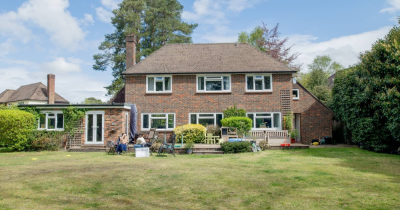Design directory: 1950s architecture
The 1950s were a transformative decade for architecture in England, shaped by post-war recovery, innovation, and a desire for modern living. Read on for more information about this period.

The 1950s saw the emergence of practical yet stylish homes and public buildings that continue to define mid-20th-century design. Let’s take a closer look at the architectural trends, features, and cultural influences that characterised this era.
Post-War context and housing boom
Following the devastation of World War II, Britain faced a severe housing shortage. The government prioritised rebuilding efforts, leading to mass construction of homes. Prefabricated housing had paved the way during the late 1940s, but by the 1950s, traditional brick and timber returned as primary materials. The focus was on creating affordable, functional homes quickly to accommodate the growing population.
Council estates often featured simple, boxy designs with low-pitched roofs and rendered exteriors. Meanwhile, private developers introduced more inventive layouts, such as staggered open plans and split-level designs. These homes were bright and modern, offering large windows to maximise natural light—a stark contrast to the dark Victorian terraces many families were leaving behind.
Key features of 1950s homes
The 1950s embraced simplicity and practicality without sacrificing style. Here are some defining characteristics:
- Exterior Design: Homes were typically rectangular with plain brickwork or rendered facades. Low-pitched or flat roofs became common, reflecting a minimalist aesthetic.
- Windows: Large picture windows dominated, flooding interiors with light and offering a sense of openness.
- Interiors: Open-plan layouts gained popularity, often featuring fitted kitchens—a revolutionary concept at the time. Space-saving furniture like sofa beds and fold-away tables became household staples.
- Materials: Innovative materials such as aluminium, vinyl, and melamine were introduced alongside traditional brick and timber. These new materials allowed for vibrant colour schemes, including pastel “ice cream” tones.
Pros and cons of living in a 1950s home
Living in a 1950s home offers a unique blend of charm and practicality, but it also comes with its challenges. On the positive side, these homes often have good-sized gardens and on-site garages, making them ideal for families. Additionally, they can be good value for renovation or investment, as they typically have a more modern layout compared to older period properties.
However, some drawbacks include poor energy efficiency due to outdated insulation and window designs, which can lead to higher heating bills. Furthermore, maintenance costs can be higher due to the need for updating electrical and heating systems, which were basic by today’s standards.
Despite these challenges, many homeowners appreciate the character and period features that 1950s homes offer, making them a popular choice for those seeking a mix of nostalgia and modern convenience.
Cultural impact
The architectural style of the 1950s reflected Britain’s optimism during a time of recovery. Homes were designed not just as shelters but as spaces for modern living—bright, efficient, and adaptable to changing family needs. Public buildings symbolised progress and creativity, laying the groundwork for the bold Brutalist designs that followed in the 1960s.
Legacy
Today, 1950s architecture remains an integral part of England’s urban landscape. Whether you’re exploring mid-century council estates or admiring iconic public buildings like the Royal Festival Hall, these structures tell a story of resilience and innovation—a testament to how design can shape society during times of change.
For those seeking a home with character or an investment opportunity, 1950s properties offer both charm and practicality. With their timeless appeal and historical significance, they continue to capture imaginations across generations.
If you are looking to buy or sell your home from this era, why not get in contact with By Design today to see what we can do to help.
Image credit: Fifi McGee
Get in touch with us
First Name*
Last Name*
Mobile Phone*
Your Email Address*
Are you looking to*
Please enter message here*
Please confirm that it is okay for us to contact you about this information as well as products and services. (You will always be given the right to unsubscribe at any point in the future)*



